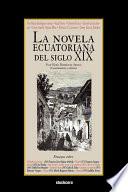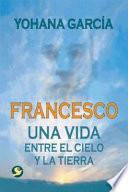La Novela Ecuatoriana Del Siglo Xix
Resumen del Libro

During the nineteenth century in Ecuador, writers produced novels that contributed to literary movements and schools of thought within Spanish-American literature. Placido (1871) by Francisco Campos and Entre el amor y el deber: Escenas de la campana de 1882-1883 en el Ecuador (1886) by Teofilo Pozo Monsalve are serious contributions to Romanticism. El hombre de las ruinas… (1869) by Francisco Javier Salazar Arboleda, departs from a raw Realism, but ultimately arrives vigorously at the characteristics associated with Naturalism. Conversely, Soledad by Jose Peralta (1885) and Timoleon Coloma: Dibujos de costumbres quitenas (1887) by Carlos Rodolfo Tobar represent the consolidation of the realistic novel during the last quarter of the century, shortly thereafter, Campana y campanero (1891), by Honorato Vazquez, expresses attachment to Ecuadorian fiction and turn-of-the-century Spiritualistic Realism. The selection of essays concludes with Titania (1892) by Alfredo Baquerizo Moreno, a novel that exhibits tension between aspects of Realism and Naturalism, and which ultimately inscribes its world of fiction within Spanish-American modernism. The collection ends with an analysis of Abelardo (1895) by Eudofilo Alvarez, a completely modern novel and precursor to the well-known –isms- and unprecedented ideological changes of the twentieth century. La Novela Ecuatoriana del siglo XIX – Essays Flor Maria Rodriguez-Arenas (editor) Essays by: Flor Maria Rodriguez-Arenas Raul Neira Christen Picicci Danilo Garcia Bernal Cesar Andres Ospina Mesa Patricia G. Carrasco Jeimy Garcia Sanchez on: -El hombre de la ruinas…- (1869) by Francisco Javier Salazar Arboleda -Placido- (1871) by Francisco Campos -Soledad- (1885) by Jose Peralta -Entre el amor y el deber: escenas de la campana de 1882 y 1883 en el Ecuador- (1886) by Teofilo Pozo Monsalve -Timoleon Coloma- (1887) by Carlos R. Tobar -Campana y Campanero- (1891) by Honorato Vazquez -Titania- (1892) by Alfredo Baquerizo Moreno…





